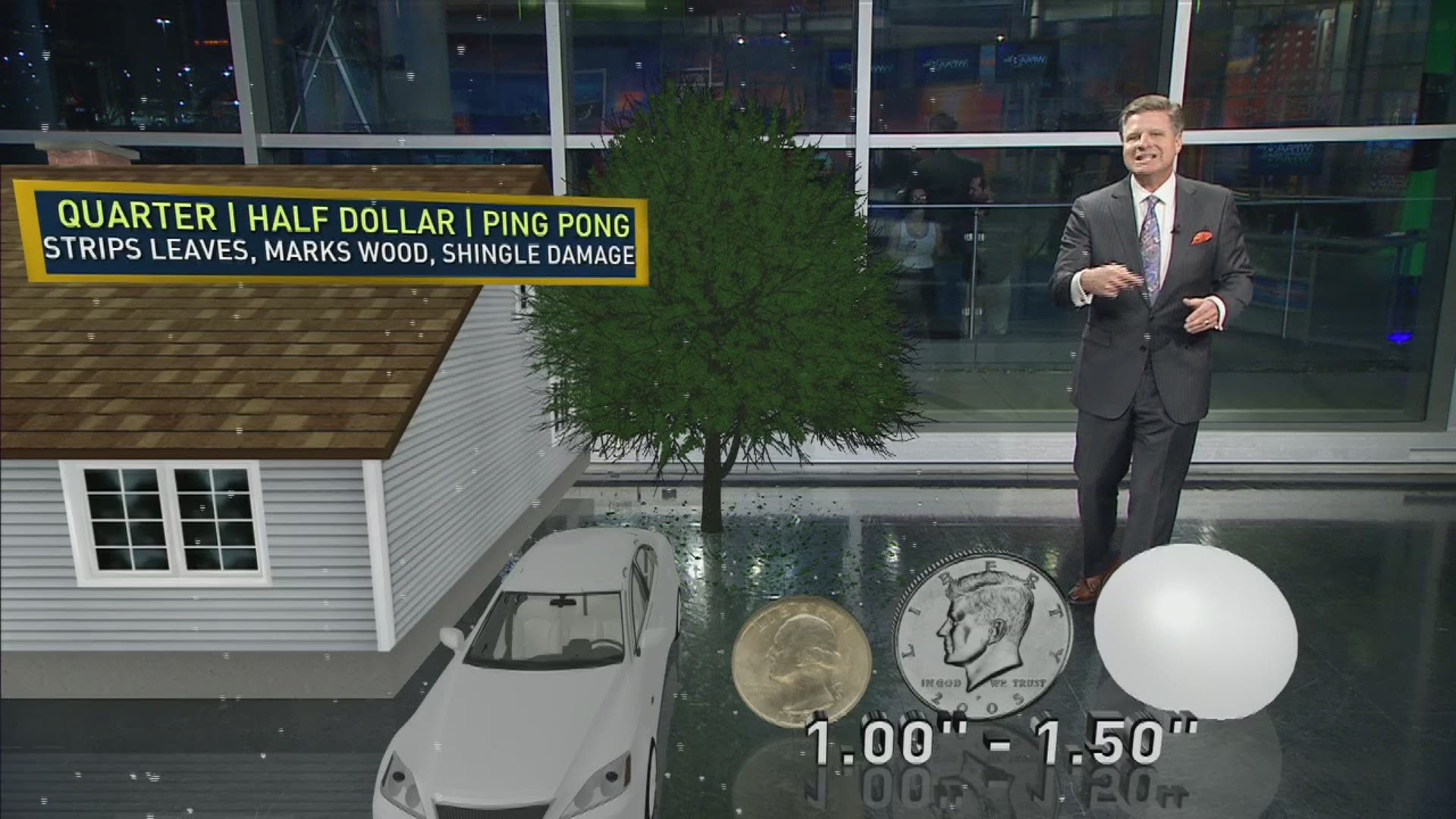Storm season is flaring up.
That means a threat for tornadoes — and, more frequently, hail.
While tornadoes pose their own danger, hail can cause serious damage and injury.
Here’s what you need to know:
What is hail?
Hail starts as innocent little water droplets that thunderstorms carry high into the atmosphere, where the droplets freeze and form balls of ice, according to the National Severe Storms Laboratory (NSSL).
How big does hail get?
It’s usually the size of peas or marbles, but strong storms can produce hail the size of golf balls and baseballs. The largest hail comparisons are grapefruits and softballs.
The largest hailstone in the U.S. fell in 2010 in South Dakota and was eight inches in diameter, according to NSSL.
But for the most part, you won’t be needing the measuring tape when you get hail. Just compare it to a commonly known object.
Here’s the official comparisons from the NSSL:
Pea = 1/4 inch diameter
Marble/mothball = 1/2 inch diameter
Dime/Penny = 3/4 inch diameter
Nickel = 7/8 inch
Quarter = 1 inch — (hail quarter size or larger is considered severe)
Ping-Pong Ball = 1 1/2 inch
Golf Ball = 1 3/4 inches
Tennis Ball = 2 1/2 inches
Baseball = 2 3/4 inches
Tea cup = 3 inches
Grapefruit = 4 inches
Softball = 4 1/2 inches
How much damage can hail do?
Hail most commonly damages vehicles, but it can also damage homes and buildings and injure people and animals. In 2016, a hailstorm killed five flamingoes and three other birds at the Fort Worth Zoo.
Damage in Texas from storms that spring was estimated at $700 million, according to Insurance Journal.
Also, according to the Insurance Journal, the most Allstate-insured homes damaged in storms in Texas over the last 10 years has been in Collin County.
How do I prevent damage?
Do the obvious: If hail is in the forecast, park your car in the garage or under a carport or awning.
If none of that is an option, there is one interesting product that might be helpful: the Hail Protector, a cocoon-like inflatable that covers your car.
As for your home and building, you might just have to hope for the best.

